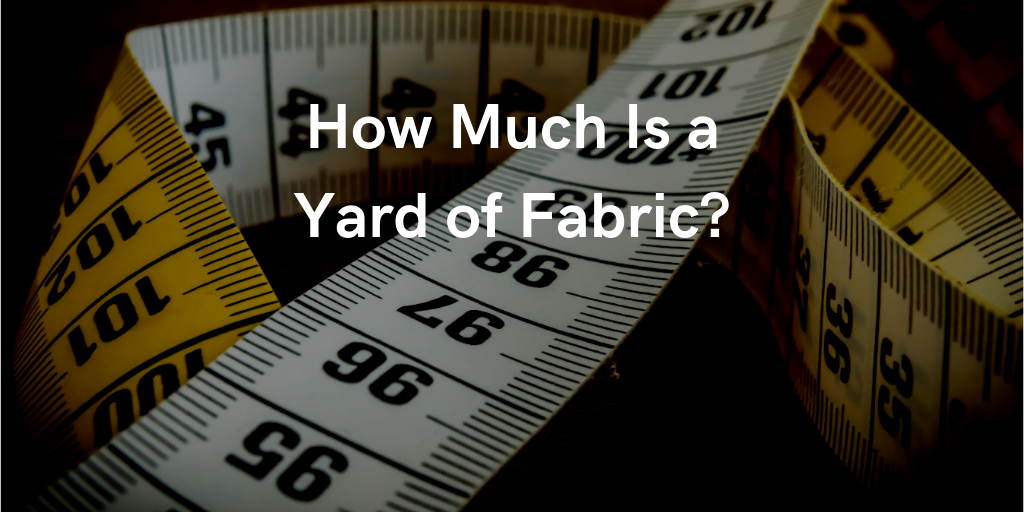How Much Is a Yard of Fabric? Yard of Fabric Information
Apr 11th 2019
Being accurate is the most important thing when you’re working on a sewing project. Whether you’re a professional or an amateur, you still need to determine the required right yardage from a fabric before you start shopping.
After choosing the model and picking your favorite fabric, you want to make sure that you know exactly how much material you must buy. Running out of fabric in the middle of a project is such a turnoff. At the same time, you don’t want to end up with extra fabric that won’t be useful for anything. Determining the yardage needed for a fabric means that you’re careful with money. Therefore, you must learn how much exactly is a yard of fabric and how many yards are needed to execute various sewing projects.
Measuring a Yard of Fabric
Fabrics come in various widths, so a yard of the fabric refers to the length of material only. The material is unrolled from the bolt, and you should measure 36 inches or 3 feet. That’s precisely how much a yard of fabric is. The bolt is the part that holds the material together, and no matter how wide the fabric is, the yard is 36 inches measured off the selvage edge.
If you have a model that you wish to follow, sometimes you’ll have to convert from yards to the metric system. You can go online and convert centimeters to inches, so you’ll know exactly how much material to buy.
How much fabric do I need?
Before executing a model, you must calculate how much material you exactly need so you can buy the right amount. However, there are some tips that can help you end up with the right amount of material.
If your model has a seam, this means that you’ll need extra fabric. Calculate the seam allowance and multiply it by two then add it to the length and width of the fabric. If you’re making a pillow, for example, you’ll have to pay attention to the seam allowance.
If you are making skirts, pants, or dresses that need to be hemmed, you’ll have to calculate how much the hem will be, then add it to the amount of fabric you’ll buy. If you don’t do this, the model will be too short.
Think of the dimension of the piece and whether it fits the width of the fabric you’re buying or not. If the width of the design fits the fabric, calculate the length then divide it by 36 to find out the number of yards you should buy. If you end up with yard increments, then you should round up to the next yard.
If the width of your design is wider than the width of the fabric, you’ll have to sew or join several pieces together. This is what happens when you’re working on bedding and curtains. Calculate the width of your model and divide it by width of the fabric. After you round down to the nearest yard, you’ll end up with the number of pieces that should be joined or sewn together. Now multiply the length by the number you got. Divide this result by 36, and you’ll end up with the number of yards you have to buy.
Working with Patterns
The patterned fabric looks elegant and stylish but is somewhat challenging to work with. You want to make sure that the patterns match so they won’t ruin your model or its style. Working with patterned fabric means that you’ll buy more material to make sure that the prints match. Before dividing the result by 36 to obtain the numbers of yards, you’ll add one extra repeat of the fabric. Working with patterns means that you’ll end up with some unused fabric.
Working on various models
The calculations work for the average misses sizes from 10 till 14, with an average height of 5 feet and 4 inches. Most patterned materials come in a single width, while double width fabrics are usually solid colors. In most cases, you’ll find the required yardage of both types of fabrics.
Pants
For full-length pants, you’ll need 3 ¼ yards of a fabric that has a single width of 35 to 36 inches. A double width fabric of 58 to 60 inches wide means more material so you’ll only have to buy 2 ¼ yards. You should add ¼ yards for the cuffs.
For Capri length pants, you’ll buy 2 ¾ yards of single width fabric and 1 ½ yard of double width fabric. For the Bermuda length shorts, you’ll only use 2 ½ yards of a single width fabric and 1 ¼ yard of a double length fabric.
Skirts
A straight skirt requires less material than an A-line model. A straight skirt needs 2 yards of material of a single width fabric. You should add a quarter of a yard for an A-line or softly gathered model. For a double width material, you’ll need 1 ¼ yard for a straight skirt or 1 ⅜ yard if it’s an A-line model.
Shirts and Blouses
If you want to execute a shirt or a blouse with short sleeves, you’ll need 2 yards of a single width fabric. For a long-sleeved top, you’ll need 2 ½ yards. For a double width fabric, you’ll 1 ¼ yard with single width fabric and 1 ⅝ yard of double width fabric. If you’re working with patterns like plaids, you should add one length of the plaid repeat for every yard of material.
Dresses
For a dress with short sleeves, you’ll need 4 ¼ yards. Add ¾ of yards if you want to make long sleeves. This calculation works if you’re executing a model with a straight skirt. A wider skirt requires more fabric.
There are lots of online charts that can help you calculate the number of yards needed for a specific model or size. If your model doesn’t come with the right numbers, you can check this online guide for an approximate answer.




